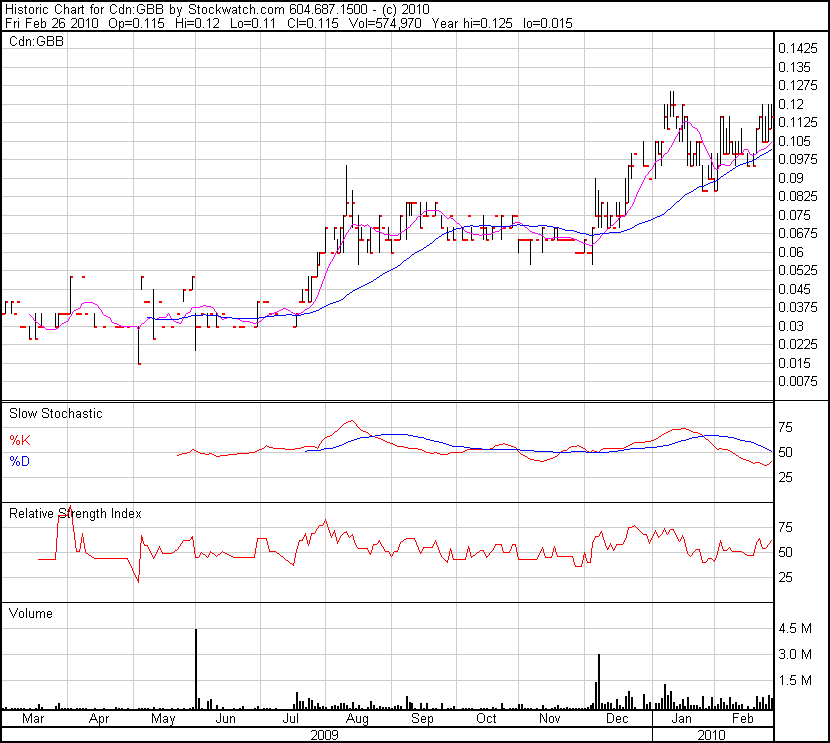As readers of this site know, we have been extremely bullish on Gold Development Development Corporation (GBB, TSX-V) for over two months now since we uncovered this gem in mid-December at 7 cents. We stated at that point that Gold Bullion “is going to be our next Seafield“. Seafield (SFF, TSX-V) is up nearly 500% since we initiated coverage on it last summer.
Our belief and theory, based on endless research of the past producing Granada Gold Mine and the area surrounding it, is that Gold Bullion is sitting on potentially a major open-pit, bulk tonnage tonnage deposit, or series of deposits, at its 2 km x 7 km property six kilometres south of Rouyn-Noranda, Quebec, along the prolific “Cadillac Trend” which has hosted numerous multi-million ounce gold deposits.
What’s particularly intriguing about Gold Bullion’s property is the near-surface mineralization it is encountering. Most “Cadillac Trend” deposits are very deep, one or more kilometres underground. It’s possible that Gold Bullion does have some spectacular gold grades and intersections deep underground – that kind of drilling has never taken place at Granada – but what we do know is that the company is finding shallow mineralization at economic grades in areas where drilling has never occurred before at Granada. Previous operators in the 1980’s and 1990’s drilled some 500 tightly-spaced holes over a small footprint at the historic mine but for some strange reason ignored the surrounding area. Quite often, the best place to find a new mine is near an old mine. Gold Bullion has taken a fresh approach to Granada which is why they have expanded their land package over the last few years from a mere 71 hectares, around the old mine workings, to 2,300 hectares, pushing east in the direction of Osisko’s (OSK, TSX) massive Canadian Malartic Deposit which is just 40 miles away.
Gold Bullion started its first-ever drilling at the Granada Property last December and by the middle of January completed a total of nearly 3,000 metres and 25 holes. Assay results on 19 of those holes are pending. The mineralized zone at this early stage is already measured at 600 metres in length, 150 metres in width and up to 70 metres in thickness. Keep in mind this company has already completed a huge bulk sample at Granada with an average grade of 1.62 g/t Au. Stunningly, the waste from that bulk sample, along with stockpile waste from past bulk sampling programs at the Granada Mine by previous operators, returned a grade of 1.75 g/t gold. This confirms the presence of gold mineralization between the nine known vein structures which trend east-west as one large overall structure. The grades Gold Bullion is encountering at Granada are very comparable to Osisko’s grades at Canadian Malartic.
Looking at Gold Bullion’s chart, provided below courtesy of Stockwatch, it appears this stock is headed north in a hurry. All moving averages are in bullish alignment and the stock has made a consistent series of higher lows. The volume breakout in December of last year was hugely significant. And the overbought condition from January, based on Stochastics and RSI, has cleansed itself, paving the way for a breakout to a new 52-week high. We expect the wall of resistance at .125 to collapse very soon.
The recent turnaround in Gold Bullion’s 20-day moving average is significant as well and provides further evidence that a major short term move is in the works. Bottom line: the very favorable technical condition of this stock is suggesting that Gold Bullion is indeed on the verge of something big – and potentially very big – at the Granada Gold Property.

